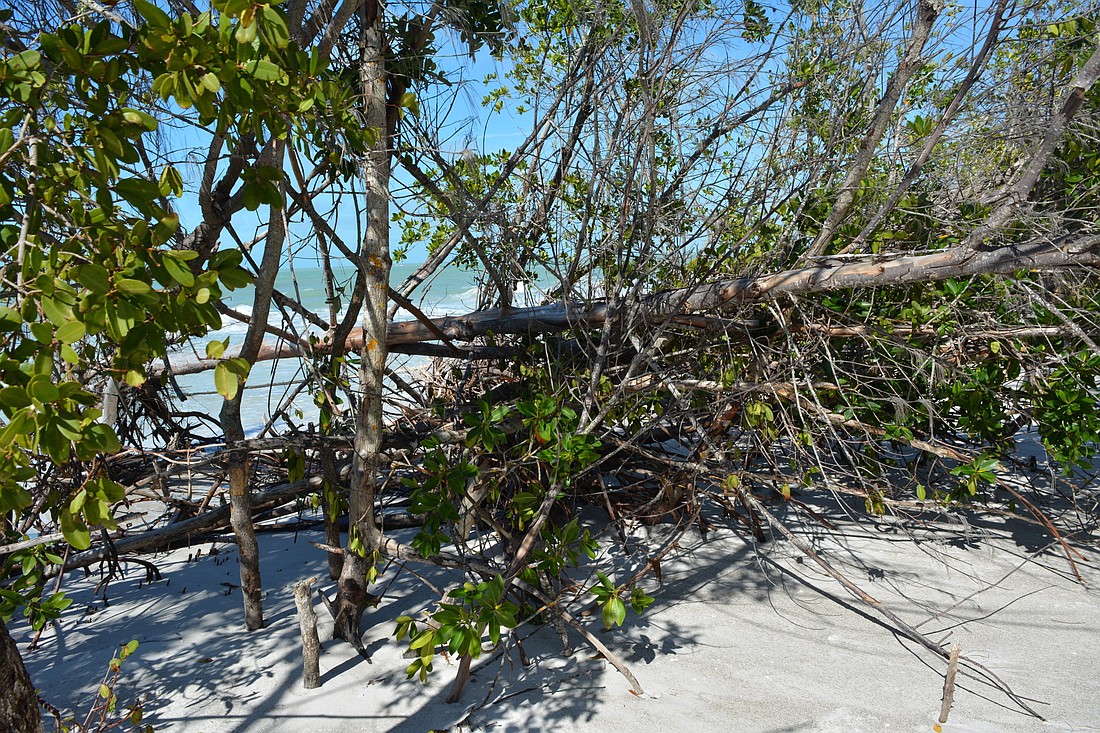- April 17, 2024
-
-
Loading

Loading

With little hope of state money and short-term solutions that likely cost more than the benefits they could bring, a representative of Longboat Key's coastal engineering company recommended rapidly pursuing a long-term solution to erosion on Greer Island.
Armed with that knowledge, the Town Commission on Monday, May 15, recommended pressing ahead with its so-called "beneficial use project" as a short-term fix. This project, which will be conducted by Taylor Engineering, Inc., proposes dredging sand from the east side of Greer, where a spit is nearly connecting with the mainland. The sand from this dredge would then be used to fight off erosion on Greer Island by reinforcing the sliver of land on the area’s west side.
Albert Browder of Olsen Associates, Inc., Longboat Key’s coastal engineer, told commissioners he would present the town with possible long-term erosion solutions, including a terminal groin on the gulf side of Greer Island, in August. Such solutions would be expected to last for decades.
Erosion is an ongoing problem on the north-end island. Recently, the area has been experiencing overwash during heavy storms. These events have raised concerns for a potential breach, which could open the flow of water between the Key and Greer, making Greer unreachable to pedestrians and possibly subjecting residences at Longboat’s northern tip to wave action, which could cause damage to structures.
In March, commissioners approved a budget transfer of nearly $400,000 to the North End Shoreline Stabilization Project. The funds, which were left over from previous construction projects in the beach budget, were used to determine the feasibility of an immediate, short-term solution, as well as developing a decades-long plan for the area.
Browder presented commissioners with options for possible short-term solution.
Browder said the state would likely not issue a permit for “shoreline armoring,” like marine mattresses and geotextile tubes, because no infrastructure is vulnerable.
“We do not feel there any structures that are really threatened by this,” Browder said. “The state, we believe, will find the same thing.”
Further, Browder said the benefit of other short-term options, such as temporary groins and sand placement from upland sources, does not outweigh the cost.
According to Browder, the only benefit of a short-term solution is protecting mangroves and seagrass. He also noted that a potential breach could be fixed, should one occur.
Bob Bunting, 360 North resident and a former National Oceanic and Atmospheric Administration official, also gave a presentation. He advocated for the town to pursue a short-term measure against a potential breach to protect residences from wave action, as well as the health of vegetation like mangroves.
“That’s what holds Greer Island together,” Bunting said. “The massive root systems.”
Among the proposals Olsen said he will likely recommend in August is a terminal groin on the gulfside of Greer Island.
A terminal groin on the gulfside Greer Island was initially proposed with the two near North Shore Road, but the prospect was delayed after Manatee County challenged the plan. In a 2014 settlement, the town agreed not to begin permitting for the third groin until 2019, in return for construction of the other two.